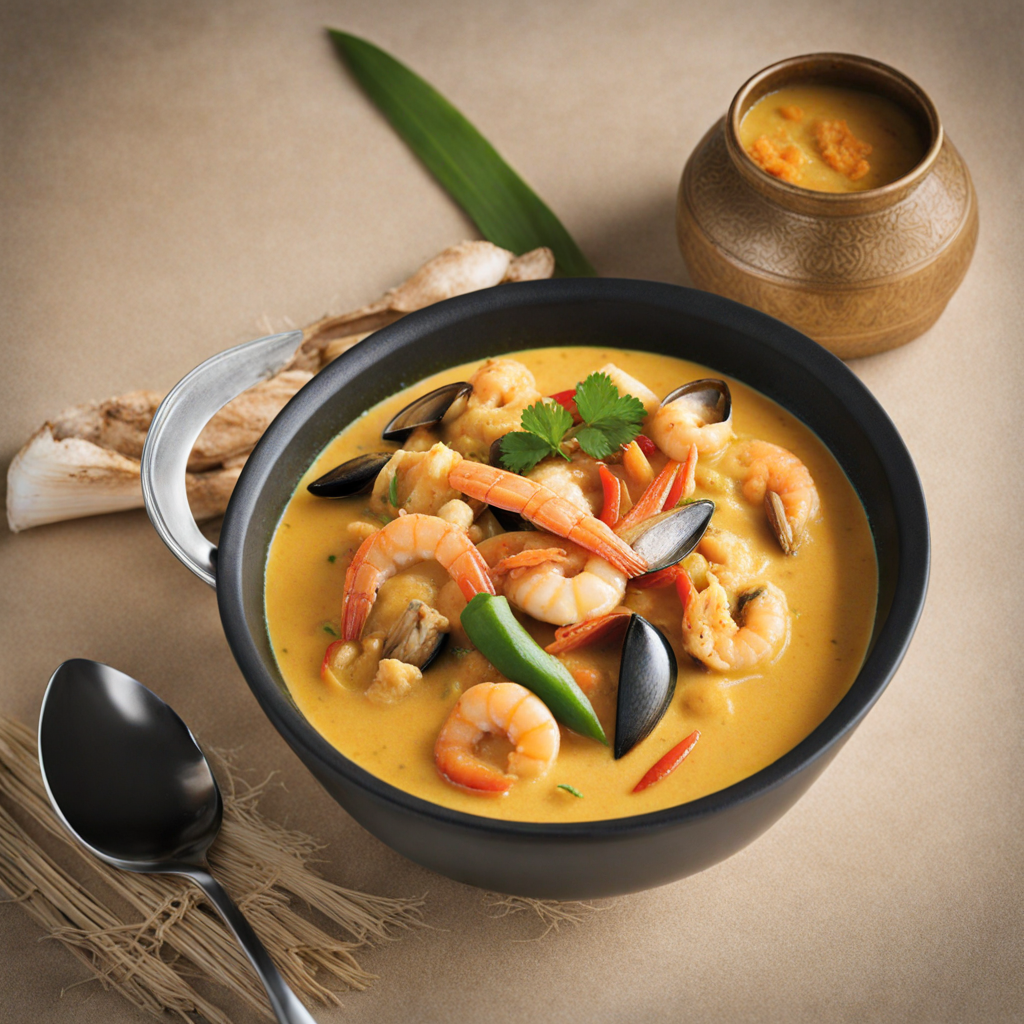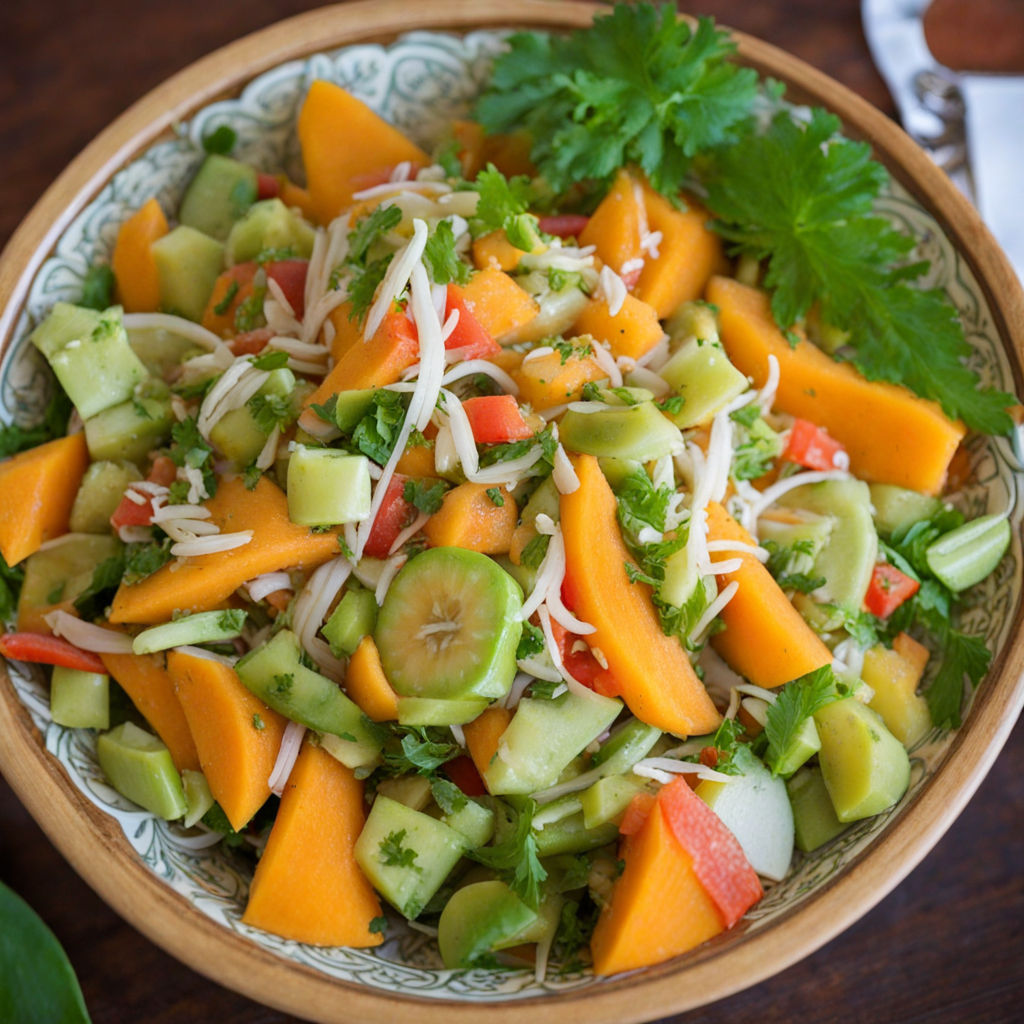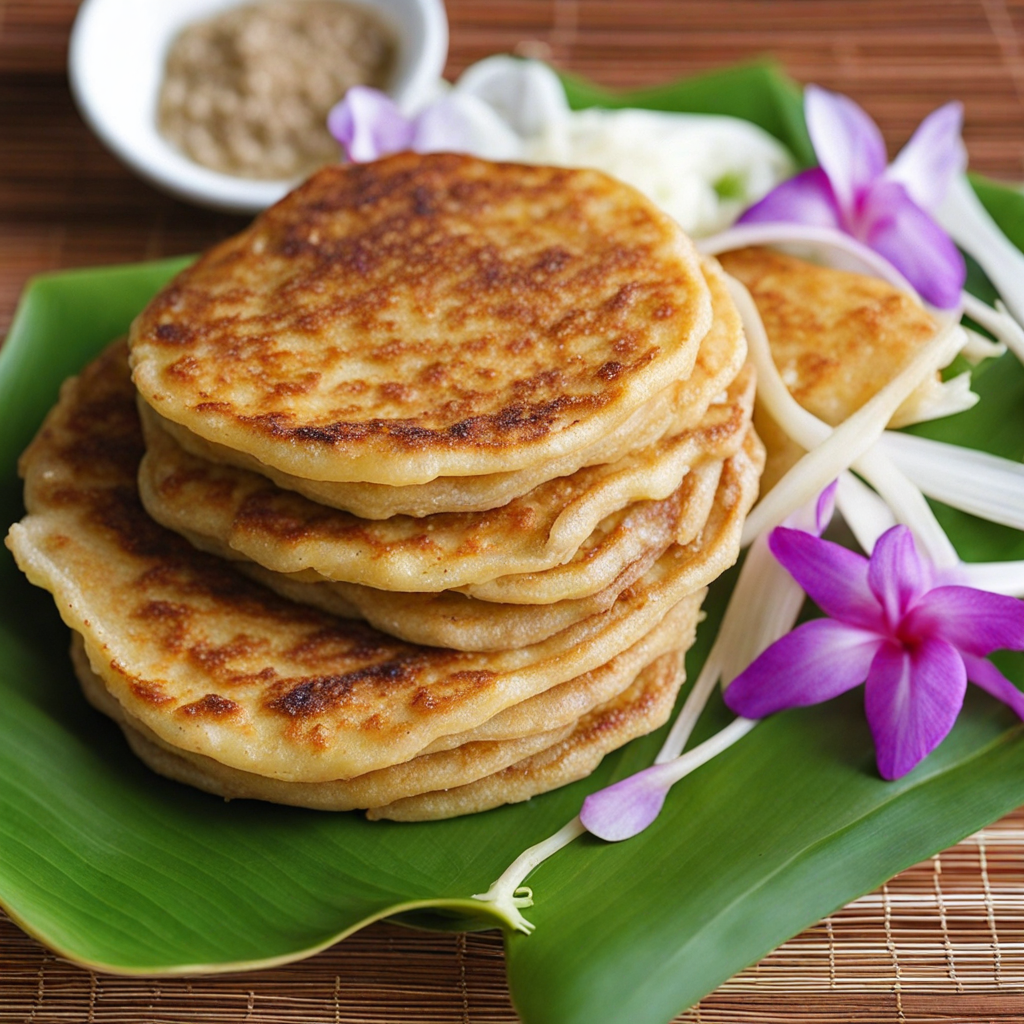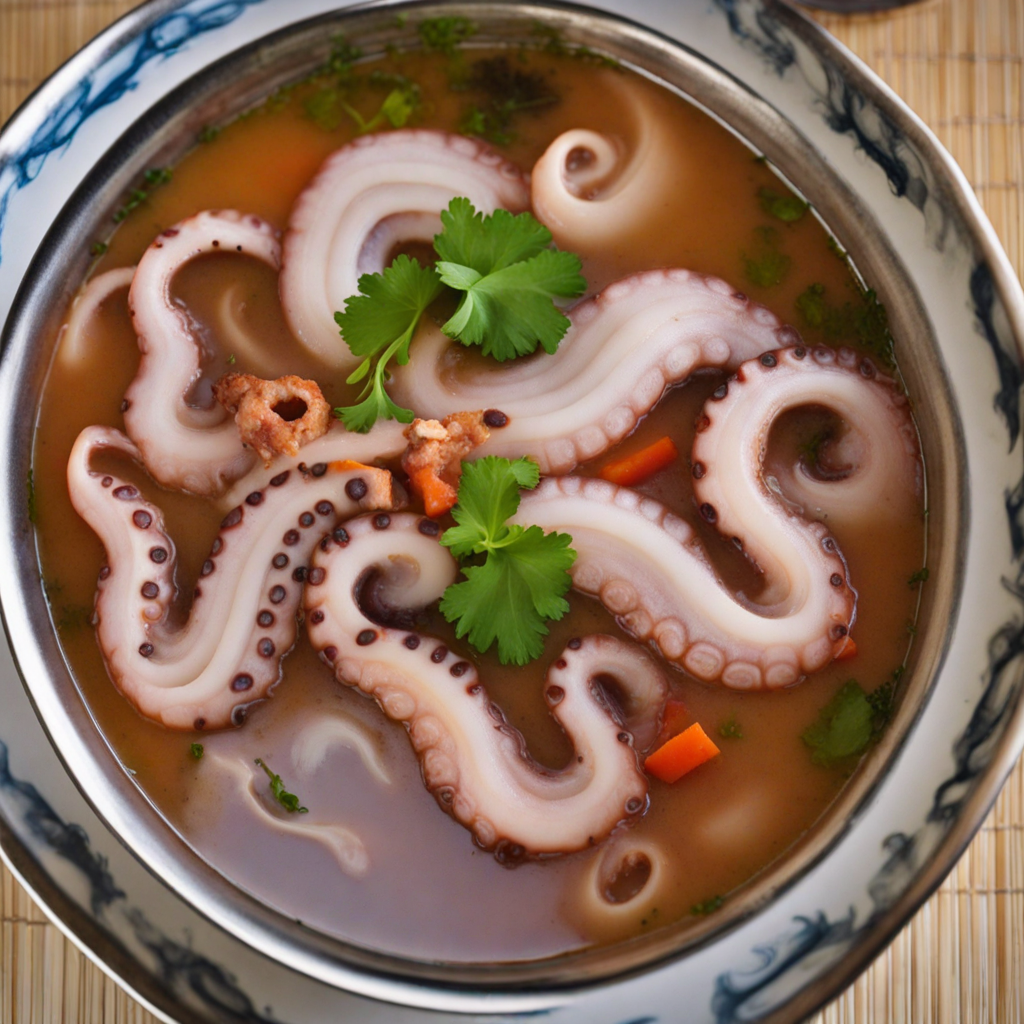Seafood Coconut Curry
Seafood Coconut Curry from Tuvalu is a delightful and aromatic dish that beautifully showcases the country's rich maritime heritage. The dish is a vibrant medley of fresh seafood, including fish, prawns, and mussels, all simmered in a luscious coconut milk base. The coconut milk adds a creamy sweetness that perfectly balances the natural brininess of the seafood, creating a harmonious flavor profile that is both comforting and refreshing. This dish is often enhanced with local spices and herbs, such as turmeric and lemongrass, which infuse the curry with an exotic fragrance that transports your taste buds straight to the azure waters of the Pacific. The preparation of Seafood Coconut Curry is a labor of love, with each ingredient meticulously selected to ensure maximum freshness and flavor. The seafood is typically sourced from local fishermen, making this dish not only a culinary delight but also a celebration of sustainable practices. As the seafood cooks, it absorbs the flavors of the coconut milk and spices, resulting in tender morsels that burst with flavor. This curry is often served with a side of steamed rice or traditional taro, allowing you to soak up every drop of the delicious sauce. Eating Seafood Coconut Curry is an experience that engages all the senses. The vibrant colors of the dish, from the golden hue of the turmeric to the creamy white of the coconut milk, are visually stunning. The aroma that wafts from the pot as it simmers is intoxicating, inviting you to dive into a bowl of this tropical delight. Each spoonful is a journey through the flavors of Tuvalu, where the sea meets the land, and every bite leaves you craving more of its unique and tantalizing taste.
How It Became This Dish
The Culinary Journey of Kari Niu: A Tuvaluan Delight #### Origins of Kari Niu Kari Niu, a beloved dish from the small island nation of Tuvalu, is a culinary reflection of the Pacific Islands' rich cultural heritage and environmental bounty. The name "Kari Niu" translates to "coconut curry," and it embodies the essence of Tuvaluan cooking, which is characterized by the use of fresh, locally sourced ingredients and traditional methods that have been passed down through generations. Historically, Tuvalu, an archipelago comprised of nine islands, has been inhabited for centuries by Polynesian peoples who were skilled navigators and fishermen. The islands' isolation in the Pacific Ocean provided a sanctuary for unique agricultural practices and culinary traditions. Coconuts (niu) have played a central role in Tuvaluan life, serving as a vital source of food, fuel, and building materials. The introduction of curry spices, likely influenced by trade and colonial encounters, blended with local ingredients to shape what we now recognize as Kari Niu. #### Cultural Significance Coconuts are often referred to as the "tree of life" in many Pacific cultures, including in Tuvalu. Every part of the coconut palm is utilized: the fruit is consumed fresh or used in cooking, the husk can be fashioned into ropes or mats, and the fronds can become thatch for roofing. Kari Niu utilizes the coconut's flesh and milk, which adds creaminess and depth to the dish, symbolizing the resourcefulness of the Tuvaluan people. Kari Niu is more than just a meal; it represents the communal spirit of Tuvaluan culture. Meals are often prepared and enjoyed in large gatherings, reinforcing social bonds and cultural identity. On special occasions such as family celebrations, religious ceremonies, or national holidays, Kari Niu is often served, showcasing its importance in hospitality and community life. The dish encapsulates the values of sharing, togetherness, and respect for tradition—core tenets of Tuvaluan society. #### Ingredients and Preparation The traditional preparation of Kari Niu typically involves a combination of local ingredients. The primary components include: - Coconut: Fresh coconut is grated to extract the milk, which is then used in cooking. - Fish or Meat: Tuna and other local fish are commonly used, reflecting the archipelago's maritime resources. Chicken and occasionally pork can be included, depending on availability and preference. - Vegetables and Spices: Ingredients such as taro, cassava, and green bananas are often used. Local spices, while limited, may include onion and chili, influenced by the broader Pacific flavors. The preparation process is relatively simple yet labor-intensive. It involves preparing the fish or meat, cooking it with vegetables, and adding coconut milk to create a rich, creamy sauce. Many families still follow traditional cooking methods, such as using an underground oven (umu) or cooking over an open flame, which imbues the dish with a unique flavor. #### Development Over Time As Tuvalu has navigated the complexities of modernity, the culinary landscape has evolved, and so has Kari Niu. The influence of globalization and changing lifestyles has introduced new cooking techniques and ingredients to this traditional dish. While many families continue to prepare Kari Niu in accordance with ancestral practices, younger generations are increasingly experimenting with flavors and presentation, incorporating influences from neighboring countries and wider culinary trends. The rise of tourism in Tuvalu has also played a significant role in the transformation of Kari Niu. As visitors from around the world flock to the islands, they bring with them diverse culinary expectations. Restaurants and local chefs have begun to adapt Kari Niu to cater to international palates, sometimes adding local twists or fusion elements, such as incorporating tropical fruits like mango or papaya into the dish or presenting it in more contemporary styles. Despite these adaptations, the heart of Kari Niu remains deeply rooted in Tuvaluan culture. It continues to be a staple in traditional feasts and family gatherings, serving as a link between past and present. Local chefs often emphasize the importance of sourcing ingredients sustainably, echoing the values of their ancestors who lived harmoniously with nature. This commitment to sustainability reflects a deeper understanding of the challenges facing Tuvalu today, including climate change and rising sea levels, which threaten the islands and their food sources. #### Contemporary Relevance In contemporary Tuvalu, Kari Niu also serves as a symbol of resilience. As climate change poses increasing risks to food security, the dish stands as a testament to the adaptability of the Tuvaluan people. The use of coconuts and local produce emphasizes the importance of food sovereignty and self-sufficiency in the face of external pressures. Efforts to promote traditional agricultural practices and sustainable fishing methods are increasingly recognized as vital to preserving not just the dish but also the cultural and environmental integrity of Tuvalu. Moreover, Kari Niu has found its way into the global culinary scene, where chefs and food enthusiasts seek authentic experiences. Food festivals and cultural exchanges highlight Kari Niu as a dish that encapsulates the flavors and traditions of the Pacific Islands. Through these platforms, Tuvaluan cuisine, represented by Kari Niu, gains visibility and appreciation, fostering a greater understanding of the cultural narratives intertwined with food. #### Conclusion Kari Niu is more than a dish; it is a celebration of Tuvalu’s rich cultural heritage, a reflection of its environmental resources, and a symbol of community resilience. From its origins rooted in the agricultural practices of early Polynesian settlers to its contemporary adaptations in a globalized world, Kari Niu tells a story of continuity and change. As Tuvalu navigates the complexities of modern life while holding onto its traditions, Kari Niu remains a beloved dish that embodies the spirit of the islands—a reminder of the importance of community, heritage, and sustainability in the face of an ever-changing world.
You may like
Discover local flavors from Tuvalu







